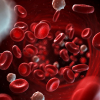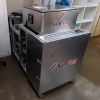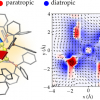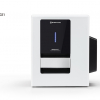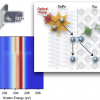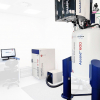Spectroscopy News
An international research collaboration has found that Raman microspectroscopy and Raman imaging can identify aneurysm-specific signs in elastic and collagen fibres of the aorta.
Researchers at the University of South Australia have developed a hyperspectral imaging method for simultaneously grading almond quality and detecting potentially serious mycotoxin contamination in kernels.
A method, based on nuclear magnetic resonance spectroscopy, allows for simulation and visualisation of magnetic-field-induced electron currents inside gold nanoparticles.
The new approach, using LIBS analysis of skid marks from tyres, could provide law enforcement additional tools to track down drivers who flee a crime scene.
A new concept, based on ICP-MS, for rapidly analysing for the presence of a virus from colds to coronaviruses has been proposed.
The Talbot effect has been used to create an interference pattern with hard X-ray beams at a sub-nanometre wavelength (0.17 nm) enabling the study of nanoscale transport phenomena.
A new ISO technical committee in this field has just been formed. ISO/TC 334, Reference materials, will develop standards related to the competent production and use of reference materials.
Applied Photosphysics was founded from research by George Porter on uses of lasers for laser flash photolysis analysis of fast reactions in 1971.
The InfinityLab LC/MSD iQ and the Ultivo Triple Quadrupole LC/MS systems have earned the Accountability, Consistency and Transparency label from My Green Lab.
Battery electrodes, storage devices for gases and some catalyst materials have tiny functional pores that can accommodate atoms, ions and molecules. Anomalous small-angle X-ray scattering and X-ray absorption near-edge structure spectroscopy can show how the pores fill.
The Geological Survey of Finland will be using the Epsilon Xflow X-ray fluorescence instrument from Malvern Panalytical to analyse the chemical composition of mine liquids in real-time.
Multi-spectroscopy analytical approach provides important information for preservation of Picasso paintings.
THz spectroscopy and machine learning can provide a rapid screen for thyroid cancer.
The new instrument will help people, including resource managers and other officials, to address increasing concentrations of methane and carbon dioxide in the atmosphere.
Shimadzu has received two “Red Dot” design awards for their MALDImini-1 and iMScope QT, a MS and optical imaging instrument.
A highly efficient way to collect infrared microscopy data avoids the use of slow, grid-based raster scans.
X-ray photon correlation spectroscopy has been used to reveal the protein dynamics in egg white as it is heated.
Study at FLASH with femtosecond time-resolved X-ray photoemission spectroscopy (TR-XPS) provides better understanding of novel photovoltaic and photocatalytic frameworks.
numares AG has made a 510(k) submission to the US Food and Drug Administration for its AXINON® IVD System, a NMR-platform for AI-driven, metabolomics-based diagnostics.

